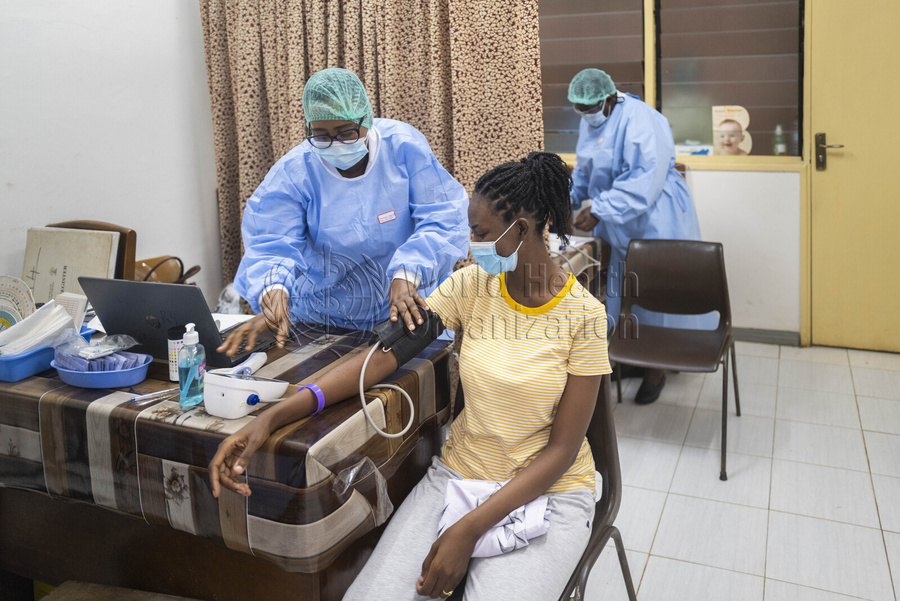By Inke Mathauer, Fahdi Dkhimi, Matthew Townsend
World Health Organization
The full report is available here.
COVID-19 continues to have a devastating impact on healthcare systems, and countries around the world are reconfiguring the delivery of healthcare services to meet the changing needs of their populations. At the same time, countries must ensure the continuity of essential health services for patients other than those suffering from COVID-19. Importantly, purchasing terms and conditions play a key role in facilitating and supporting pandemic-induced adjustments in the delivery of individual healthcare services, whether related to COVID-19 or not. National health finance authorities have taken steps to adapt their purchasing practices.
Based on an online survey that gathered information from 31 low- and middle-income countries, this blog summarizes how these adjustments to purchasing terms have been made in response to COVID-19, highlights the difficulties and explores the lessons that can be learned for the future.
The survey covered the following purchasing topics:
Buyers’ strategies for meeting increased financing needs ;
Adjustments in benefits and cost-sharing ;
Changes in providers’ payment methods ;
Changes in contractualization and provider accreditation provisions;
Changes in governance mechanisms for purchasing ;
Adjustments to information management methods ;
Lessons for the future.
Results
The most common strategy used by buyers to cope with growing financing needs was to reallocate existing resources and increase flexibility in the use of financial resources. The survey also showed that some buyers resorted to budget deficits to meet unexpected expenses. The majority of countries in the sample have expanded their basket of care to include tests, hospitalization and medication, with several countries also including teleconsultation and homecare. In most cases, the government has made provision for free COVID-19 treatment in public health services.
Purchasers have allowed providers to be more flexible in their use of financial resources. The temporary lifting of the budget cap proved to be a crucial adaptation to ensure that providers received additional budget allocations. Another measure frequently introduced by purchasers is financial incentives to motivate healthcare staff working in difficult circumstances. In addition, almost a third of countries cited the implementation of measures, often in the form of financial incentives, to encourage greater availability of resuscitation beds.
Nearly half of all countries have introduced new contracting procedures, or modified existing ones, for centers offering COVID-19 care, generally to simplify and speed up the approval process. Several countries also indicated that they had selected specific facilities on the basis of their ability to care for COVID-19 patients, but without an explicit contractualization process. Nevertheless, the majority of countries covered by the survey did not report any specific contractual arrangements for the private sector. However, it was noted that private providers have played an important role in meeting the increased demand for services related to COVID-19. Government authorities have begun to consider how to formally include private sector providers in the response, in order to avoid or reduce out-of-pocket payments.
To coordinate the health response to COVID-19, the Ministry of Health generally set up a technical committee, but in most countries other coordination and crisis management mechanisms were also put in place at higher levels of government. The participation of these higher authorities could improve coordination between the various committees, giving greater coherence to the multi-sectoral response. It is interesting to note that, in countries where separate purchasing organizations such as health insurance funds have been set up, their participation in the new coordination mechanisms has not been explicitly mentioned.
More than half of all countries have modified their information management systems, either by integrating COVID-19 reporting obligations into existing systems where possible, or by simply adding complementary modules, in DHIS2 for example. In other cases, separate new information management systems have been introduced to complement existing mechanisms. In some countries, the crisis has been an opportunity to improve information management for purchasing services and to introduce innovations. Nevertheless, in most contexts, existing health information management systems have proved insufficient to produce granular patient data related to COVID-19.
Several lessons were shared by survey participants, a dominant theme being the importance of flexibility in the use of funds, and the expansion of benefits to cover the full range of COVID-19-related health services through public funding, in order to avoid financial hardship and ensure an effective response.
Conclusions and next steps
In summary, this survey has produced a broad overview of the evolution of purchasing arrangements linked to the response to COVID-19 in low- and middle-income countries. Almost all the countries covered by the survey have adapted their purchasing systems. An interesting question is whether these adjustments have accelerated a shift towards more strategic service purchasing in the medium term, and what changes will endure over time, especially as many of them are similar to the changes applied in high-income countries where the COVID-19 pandemic appeared a few weeks earlier.
Overall, the examples provided by respondents, as well as many of the challenges described, reinforce the five essential steps for strategic purchasing shared in a previous blog on purchasing healthcare services during a pandemic:
Ensure that public funds enable the effective production of common health goods through appropriate purchasing arrangements;
Expand services and inform the public with clear, simple messages;
Adapt payment methods and rates to new service delivery modalities and ensure continuity of funding flows to healthcare providers;
Use private-sector capabilities where possible and necessary;
Establish governance mechanisms to speed up decision-making and set clear standards for reporting key information.
Clearly, reforms to purchasing and payment methods must be aimed at both accelerating universal health coverage and guaranteeing health security. These two objectives should never be mutually exclusive, but rather part of the same strategy. A key lesson is that strategic purchasing arrangements must be in place to enable rapid adaptation to the crisis context of a pandemic.
In order to further reflect on how best to pay providers for personal health services as well as for public health functions (such as testing, contact tracing, etc.) during health emergencies, as well as for emergency and pandemic preparedness, it would be useful to have more precise information on the adaptations actually implemented by purchasers in terms of payment methods and rates for existing or newly created health services in relation to COVID-19. In addition, the role played by separate purchasing organizations (such as health insurers) in crisis management governance mechanisms deserves closer attention.
As a next step, it is essential that national policy-makers examine the extent to which the changes to purchasing arrangements implemented during the COVID-19 crisis have enabled progress and innovation towards more strategic purchasing. Ultimately, it will be necessary to assess the effectiveness of the adjustments observed in purchasing arrangements, not only to determine whether they have led to greater efficiency, greater transparency and a more equitable distribution of resources, but also to determine whether they have had an impact on actual population coverage.
Policy-makers, practitioners and researchers are invited to share their national practices and experiences to facilitate mutual learning and a better understanding of which procurement interventions are useful for emergency and pandemic response, and to better prepare countries for emergencies, in order to draw lessons for the future.
The full report is available here
,,,,,,,,,____
If you would like to share information with us about adjustments made to purchasing arrangements during the COVID-19 pandemic in your country, please write to us.
For example:
How have budget flows to providers or provider payment methods and rates changed for COVID-19-related care and other health services?
How have contractualization procedures been adapted for public and private healthcare providers?
What is the role of other separate purchasing organizations in decision-making committees concerning the health response to COVID-19?
What were the main changes in overall information management procedures and/or systems (e.g. reporting requirements, data collection arrangements, data management systems) to support purchasing decisions during COVID-19?
You can write to: healthfinancing@who.int
Keep an eye out for new messages on this topic from the healthcare financing technical network, so that you can collaborate with us.
Thank you very much!


